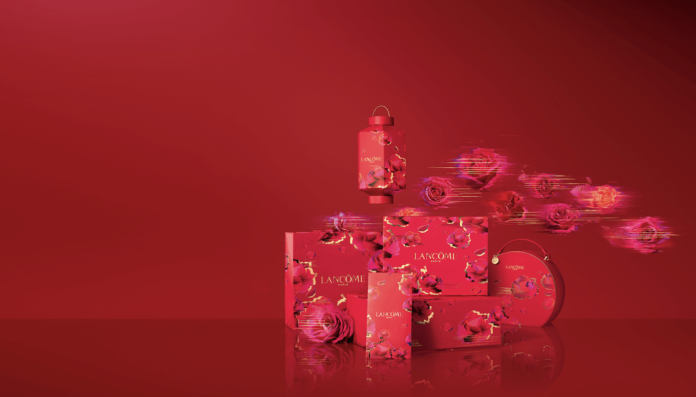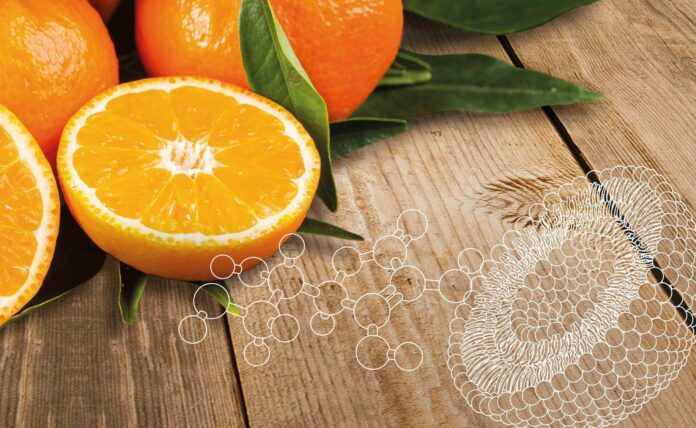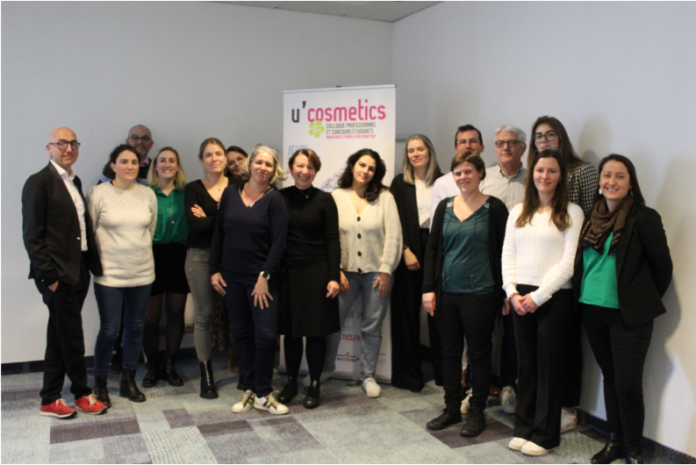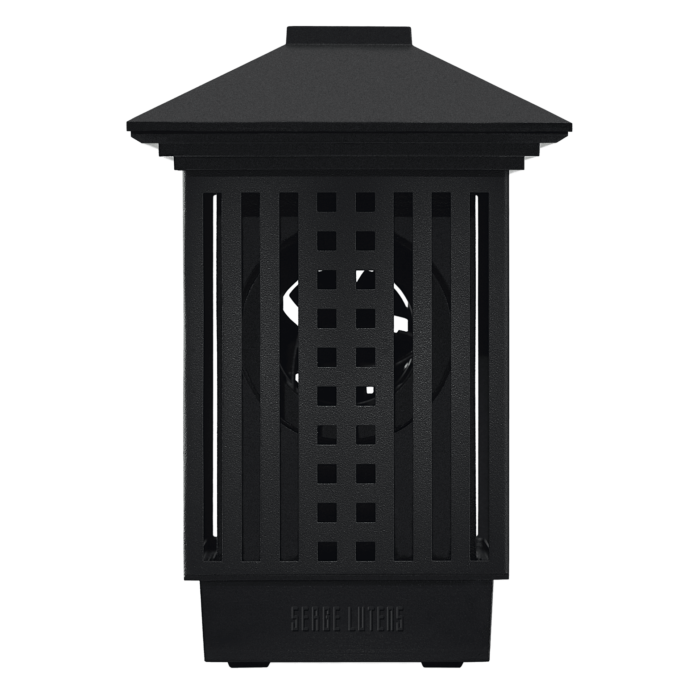This Tuesday, February 7, 2023 in Rennes was held the pre-jury of the competition U'Cosmetics 14th edition on the theme "Cosmetics and Sport". The members of the jury met and put their expertise to work in order to elect, among the 28 projects in competition, the 11 selected projects that will compete on March 16, 2023.
The members of the jury of the U'Cosmetics 2023 competition present during the pre-selection:
- Jean-Guillaume Giraudon - President of the 2023 Jury - Sales Director, Lipoid
- Cécile Bertolini - R&D manager, Bretagne Cosmétiques Marins
- Sylvie Chopin - Director of Innovation and Development, Gilbert Laboratories
- Corinne Dechelette - scientific and technical consultant, La Peau Autrement
- Emmanuelle Dumas - Founder, M.A. Wellness and Beauty
- Marion Le Goualher - General Manager, Endro Cosmetics
- Claire Lamazaa-Parry - R&D Manager, Uspalla Laboratory
- Emeline Laouilleau - Technical Director Chemistry & Care, Decathlon SE
- Laetitia Poirier - Sales Engineer France, Greentech
- Jasmine Salmi - journalist, CosmeticOBS
- Lucas Vallee, Manager IDLab - Innovation and Process, Technature
The finalist teams
The teams were judged on different criteria such as creativity, sensoriality, functionality, knowledge of the subject and execution. The jury members were able to test the samples of the competing teams in the "Formulation Innovation" category and for some projects in the "Innovative Concept" category.
Category innovative concept
Activ'Drops : University of Montpellier
Project led by Juliette Jacob, Sarah Lopez, Camille Ordureau, Flora Pare and Lucie Valentin
" No more cluttered bags with the Activ'drops bottle and its integrated pillbox! Take your 3 essential drops with you during your session: the antiperspirant with clary sage, the refreshing soap with Scotch pine and the soothing cream with arnica. Single-dose, anhydrous and natural products for a light and eco-responsible sports practice. "
AeroSkin Dynamics : University of Rennes 1
Project led by Margaux Cazoulat, Romain Cherbonnel, Léa Joannic, Solenne Mehat and Joao Gil Moreira Silva
" AeroSkin Dynamics is a product in the form of a spray with a system of interchangeable cartridges that can be screwed onto the diffuser. It meets the specific needs of athletes through four ranges. The product, composed of an XPL polymer and the active ingredient specific to its range, is sprayed directly onto the skin to create a moisturizing second skin that protects against friction. "
Cos'Mega : National Superior School of Chemistry of Montpellier
Project led by Léandre Borron, Laurine Hemous, Anaïs Piacentini, Barbara Samard and Théo Sombret
" Innovative start-up specialized in cosmetics for sportsmen, Cos'Mega launches its product MagAccroch. Inspired by the pine tree and its resources, we have created a substitute for liquid magnesia. This product is effective, true to the needs of your skin and respectful of nature. Try it and you'll be hooked! "
Lips'n go : School of Industrial Biology (EBI)
Project led by Victoire Feyants, Manon Fresquet, Myrtille Girard, Jules Gontier and Zoé Gueremy-Roy
" Lips'n Go is a lipstick adapted to all and any sports to combine protection, aesthetics and sports activity. This lipstick, designed to be used with one hand, is available in 4 shades and several ranges (aquatic, mountain and land) to respond specifically to the aggressions suffered by the lips in different environments. "
So!Cap: School of Industrial Biology (EBI)
Project led by Justine Mittler, Sixtine Naessen, Axelle Nielsen and Julie Ozon
" Our product So!Cap is a cosmetic-textile knuckle cap designed for athletes with lower limb amputations wearing a prosthesis. Its technology is based on the presence of microcapsules containing a cosmetic solution 100% vegetable, and diffusing thanks to the pressures applied during the practice of sports. The cap has a lifespan of approximately 2 years and
the microcapsules resist to about 30 washes before being recharged by pods in machine or hand wash. "
Sporty'Mouss : Polytech Angers
Project led by Marie Fernandes Machado, Henryieta Fitsner, Clara Lahellec-Etaix and Clara Le Doussal
" Sporty'Mouss is a relaxing cleansing foam without rinsing, intended for the sportsmen of any age starting from 12 years. It is a 2 in 1 product: it is a cleansing foam allowing a recovery after a physical effort. It will be easy to use and will avoid buying and bringing to the sport two different products. The cannabidiol and the arnica are the active ingredients responsible for the relaxing action after the effort. The composition of Sporty' Mouss is natural and is contained in a bottle 100% recyclable. It is the galenic, the combined cleansing and relaxing properties, the ease of use and the composition that make Sporty'Mouss unique and innovative. "
Category Innovation Formulation
BeWash : UCO Bretagne Nord
Project led by Julie Chahir, Louise Keryquel, Philomène Lecuyer, Cassandre Solbet and Coline Tilly
" The BeWash is a bi-solid single-dose product composed of a comforting and refreshing shower cream and a softening shampoo for all hair types. This product, intended for all athletes, will be available through a dispenser placed directly at the place of your sport (gym, pool, fitness room ...). "
Cir'iléa : Graduate School of Organic and Mineral Chemistry
Project led by Nasrine Chafik, Anna Machart and Sara Sassi
" Cir'ilea is a solid hair fixative designed for athletes. Its formula has been designed to be simple and natural. Mainly composed of arugula oil and beeswax, this product will maintain your hair during the effort without making them greasy but by bringing them several benefits. In addition to its format and its effective composition, it is contained in a recycled and recyclable push-up tube packaging. "
Derméole : University of Montpellier
Project led by Déborah Gilles, Hinarani Jacques, Bryan Moussi, Christele Plaisant and Élise Robolin
" Derméole offers a face stick with a purely natural formula designed to effectively protect the skin of sportsmen and women against external aggressions such as wind and cold. The stick format makes it practical, easy to use and simply portable. It is ideal for athletes of all levels and ages who practice sports outdoors. "
EZ Fresh : Itech
Project led by Clara Borguetou, Léa Dejean and Laura Etienne
" EZ Fresh is a ready-to-use single-dose deodorant in the form of malleable 99% beads of natural origin, easy to apply and effective. This product makes self-service deodorant available in gyms, making life easier for athletes! No more forgotten deodorant, no more problems sharing roll-ons, no more worries about aerosols, all that is over! "
Jock'Up : UCO Bretagne Nord
Project led by Sixtine Cartron, Solène Chaumeton, Mélissa Magnanon and Ilan Rajoelina
" Jock'Up is four natural products with practical packaging and innovative formulas. The innovations of our project: more than 97 % of natural origin, a waterproof and sweat-proof mineral SPF50 100 % foundation, a "Swop Emulsion" body cream, a vectorized perfume, a heating active ingredient acting on the skin's sensory cells and surprising textures. "
Among the 11 finalist teams, the most innovative projects will be rewarded with four prizes during the final on March 16, 2023 at the Uco in Guingamp:
- 1st Prize Innovation Formulation
- 2nd Prize Innovation Formulation
- Innovative Concept Award
- Philippe Collas Special Prize: Internet users' favorite
To win these prizes, each team will have to present its project in front of the public, the jury and the students in the form of a 4-minute pitch with a visual support. In addition, they will set up a booth to showcase their projects and answer questions from visitors.















